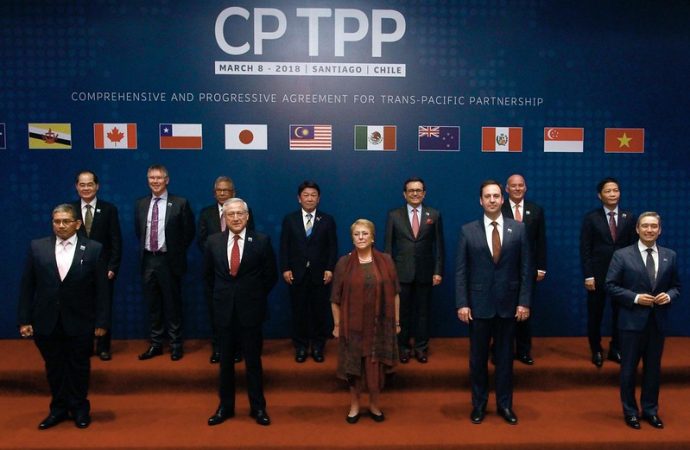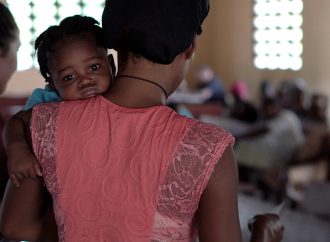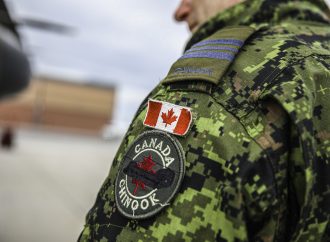Published on OpenCanada.org, June 17, 2014 The Canadian Conference of Defence Associations Institute’s Strategic Outlook (SO) 2014 published in February has nearly been dated by developments taking place around the world. In light of recent events, I examine some of the key international policy developments for the Canadian government to consider in the weeks and
Published on OpenCanada.org, June 17, 2014
The Canadian Conference of Defence Associations Institute’s Strategic Outlook (SO) 2014 published in February has nearly been dated by developments taking place around the world. In light of recent events, I examine some of the key international policy developments for the Canadian government to consider in the weeks and months ahead while reflecting upon Canada’s relationship with hotspots around the world such as Ukraine, Iran, the Middle East Peace Process and China. Obviously, there is a growing realization that unipolarity is coming to an end and that it has been accompanied by a profoundly counterintuitive, partial retrenchment on the part of the United States, except, possibly, in its cautious rebalancing towards Asia. This rebalancing, I should add, makes no sense if it only leads to an augmentation of its military presence in the region. Economics and trade, embodied by efforts such as the Trans-Pacific Partnership and efforts to offer the benefits of inclusive development throughout the region have to be the drivers of U.S.—and indeed Canadian—foreign policy.
Despite the appearance of an energetic pursuit of clearly defined foreign policy objectives, the Harper Government has not articulated a broad vision for Canada on the international stage and, as a consequence, Canada’s credibility in the world has suffered.
There is a question, however, as to the specific role played by the administration of President Obama in translating the realities of a war-weary public into a foreign policy marked by measured non-engagement and greater reliance on allies and coalitions. As 2016 approaches, we might ask the question of whether a Hillary Clinton administration might act likewise. Specifically, one needs to look at the Obama administration’s response to the crises in Ukraine, Afghanistan, Iraq, and the management of its tenuous relationship with China. Little seems to be coming out of the White House now that the Middle East peace talks have foundered. Given the pervasive atmosphere of quasi neo-isolationism in the West, Ukraine is testing the resolve of NATO members but so far they have demonstrated a clear desire to avoid any further engagement overseas. In fact, we cannot but notice a lack of leadership and absence of strategy to confront these political challenges. Ukraine is but one example of the latter even more than the former. Ironically, this retrenchment breeds more, rather than less, insecurity. This is especially true given the recent failures by NATO governments to manage crises in Iraq, Afghanistan, Libya, and Syria where the argument can certainly be made that external intervention and diplomacy failed to result in either progress or greater security both internally and for the rest of the world.
Canada’s Sharpest International Affairs Commentary Don’t miss future posts on the CIPS Blog. Subscribe to our email newsletter.
In the Middle East, particularly, there is a significant need to reconsider our strategic approach. The fall of Mosul to the armed group, Islamic State in Iraq and Syria (ISIS) is a game changer both for Iraq and the whole region. Over the past decade, we have borne witness to seeing Iraq under PM Maliki return slowly but surely to its authoritarian past. What we are seeing today as rebels take over neighbourhoods in Mosul and Tal Afar is much worse as ISIS attempts to unify a geographically disparate Islamist front. And while ISIS is attempting to draw Turkey into the battle, the Kurds in northern Iraq already view it as a further opportunity to gain further autonomy, if not full independence, from the imperiled center of power in Baghdad. Meanwhile, Obama talks about not eschewing military intervention if U.S. national interests are at stake but has already ruled out placing American troops on the ground once more. In contrast, post-Karzai Afghanistan might be more amenable to signing a Status of Force Agreement (SOFA) with the United States to allow it to maintain some troops in the country, but Obama has spoken more of withdrawal than of engagement. As such, the war will have “ended” for the United States while fighting continues in the country between the government in Kabul and the Taliban and as such, the only option for Afghanistan appears to be a negotiation with those that ISAF and the U.S. forces have battled with for more than ten years. I fear that it will be on the Taliban’s terms.
See also:
- Taylor Owen and Roland Paris, Imagining a More Ambitious Canada
- Natalie Brender, Nine New Takes on Canada’s International Future
- Roland Paris, Missing in Action: What Happened to Canada’s Foreign Policy?
Other political developments in the Middle East also don’t make good reading as the situation in Syria continues to be hellish even as President Assad declared himself the winner of the most recent elections. Egypt, too, has struggled to address the fall-out of the Arab Spring; the Muslim Brotherhood has been brutally replaced by the military and Marshal Sisi won a pre-ordained election facing a figment of opposition. The danger for the region is the vicious circle of authoritarianism breeding terrorism, non-inclusion, repression, and a hardening of the military’s hold on power. It is a reflection of the sorry state of affairs in the region that the only real hope comes from the Iran-P5+1 nuclear negotiations, which are far from being completed successfully at this stage…. __________________________ Read the rest of this essay on the OpenCanada.org website.










